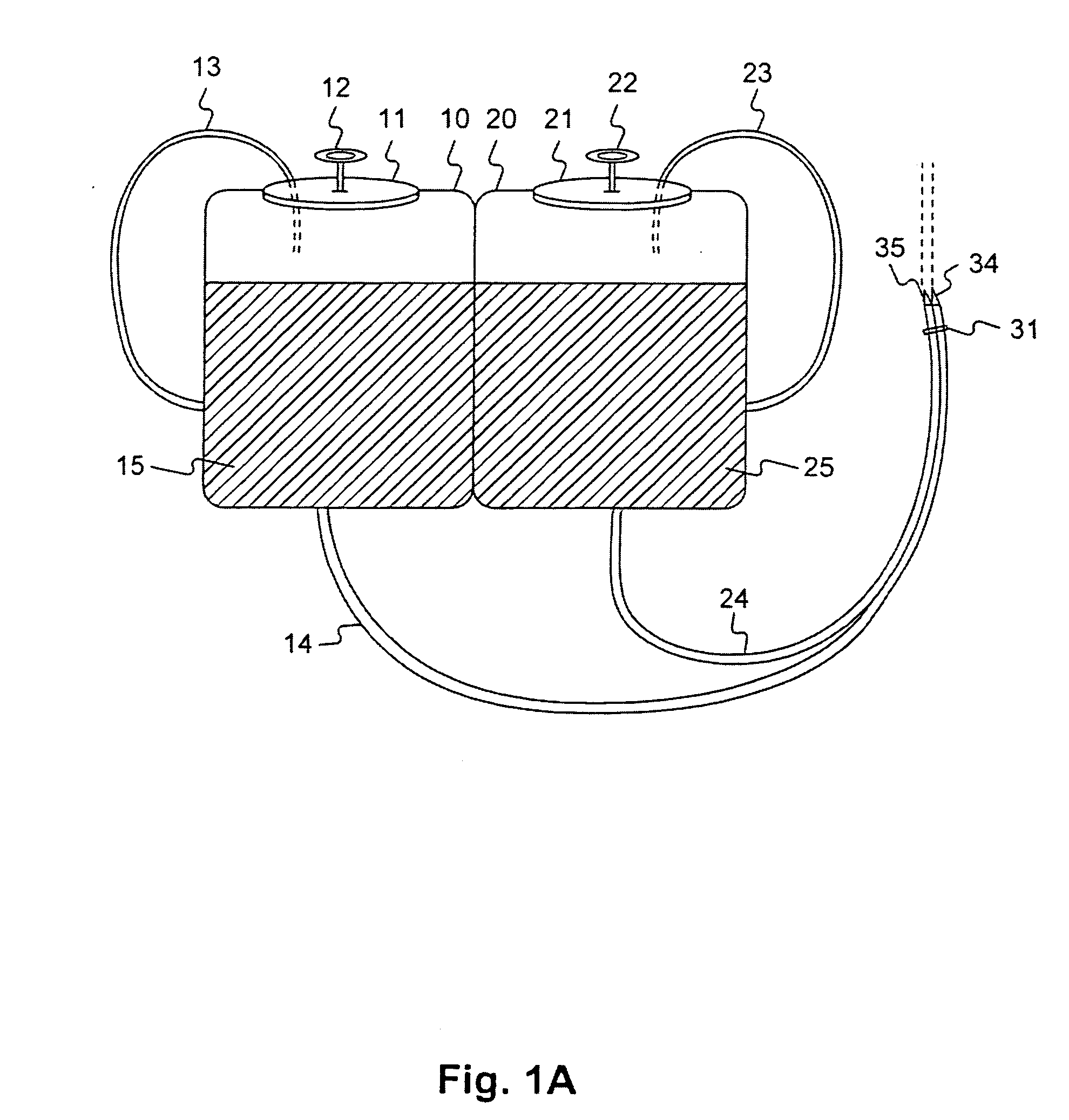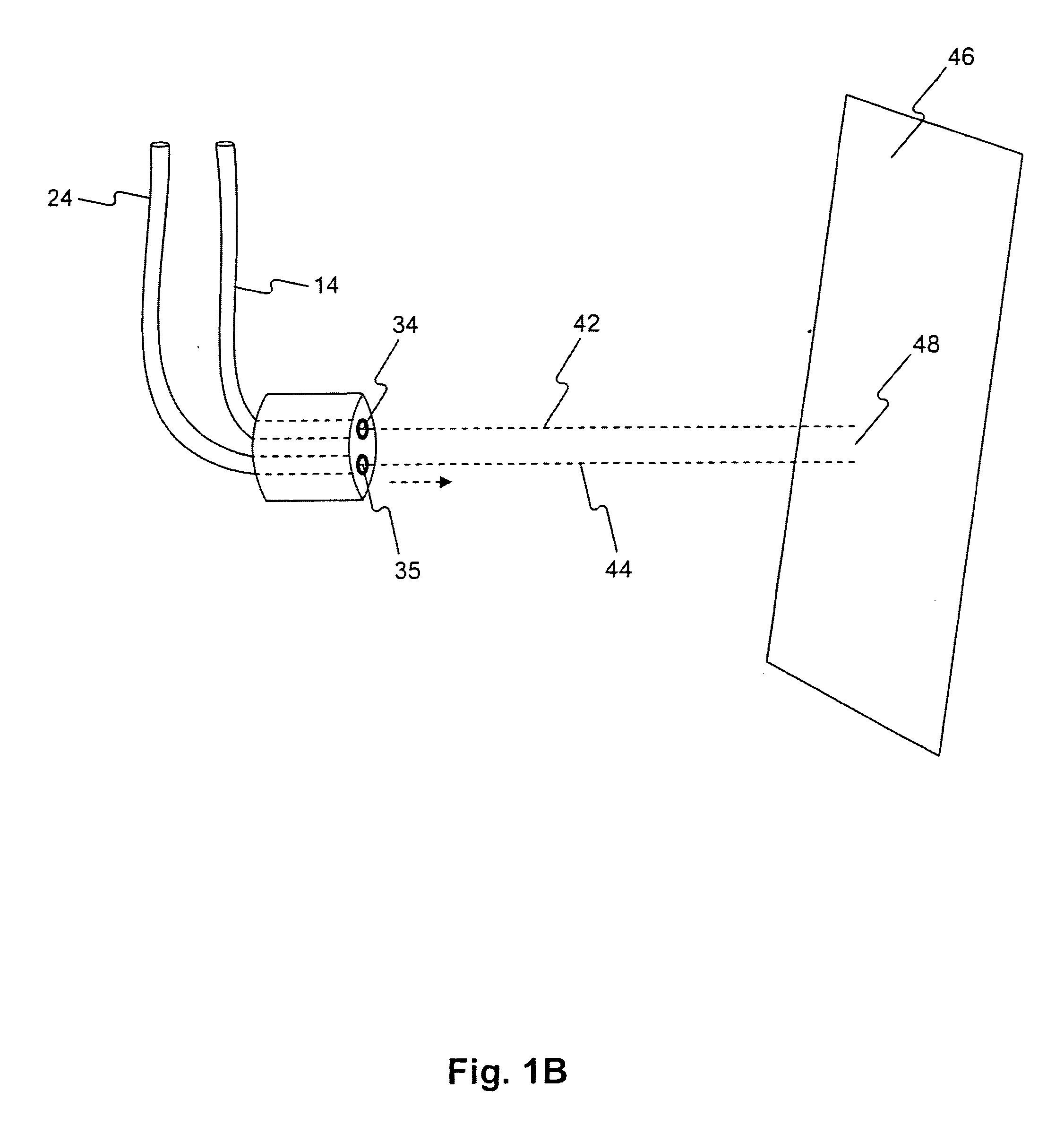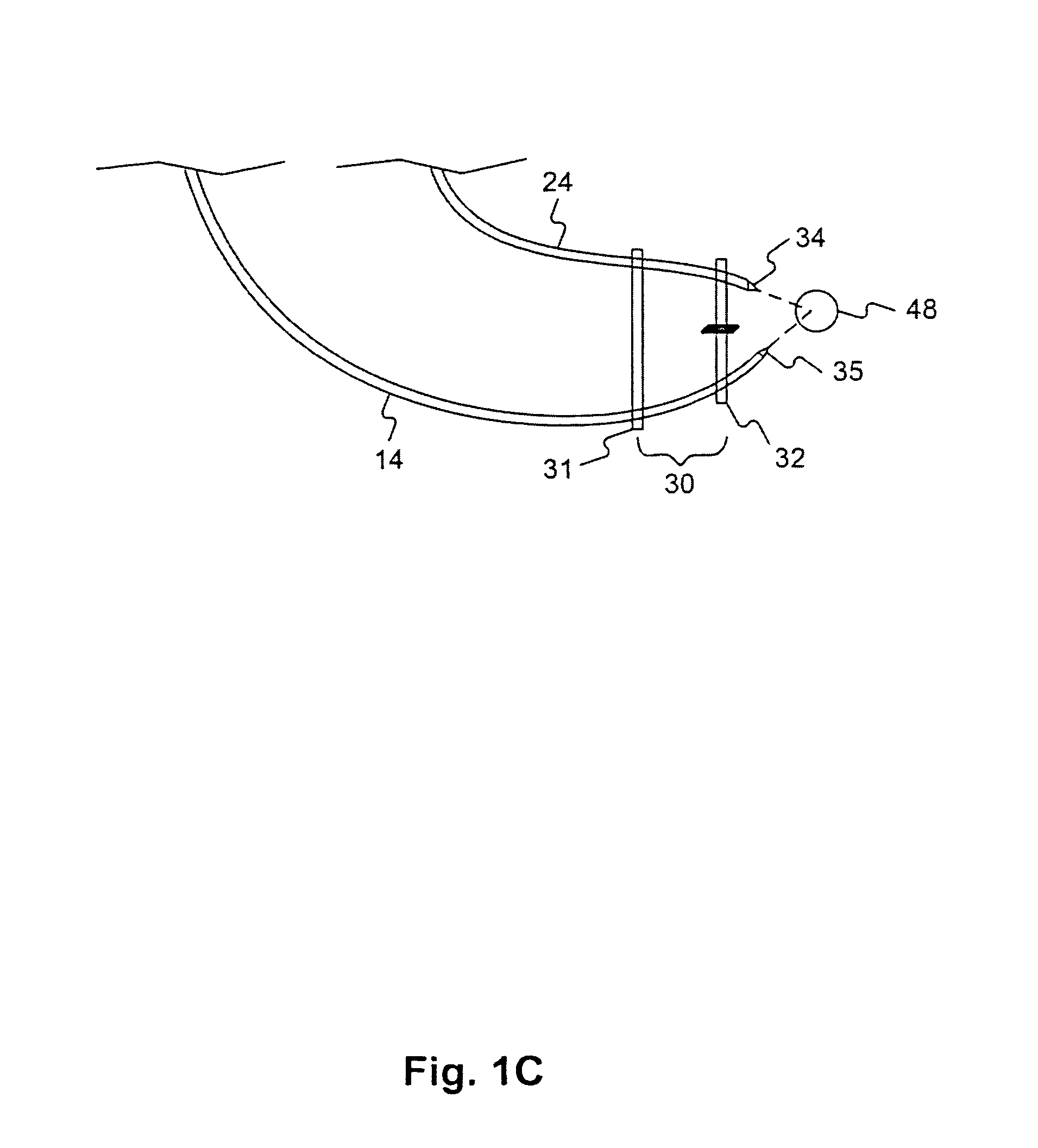Compositions, methods, apparatuses, and systems for singlet oxygen delivery
a singlet oxygen and apparatus technology, applied in the field of singlet oxygen delivery, can solve the problems of toxic or corrosive sterilants and disinfectants, pathogens, bacteria, viruses, etc., which normally live outside a person, and can become destructive or life-threatening
- Summary
- Abstract
- Description
- Claims
- Application Information
AI Technical Summary
Benefits of technology
Problems solved by technology
Method used
Image
Examples
example 1
Treatment of Keratosis I
[0264] A skin keratosis lesion measuring approximately 1.25 cm in diameter was chosen as a target for treatment. The lesion was located on the left temple of a 57-year old white male. A photo of the keratosis lesion, prior to treatment, is shown in FIG. 19.
[0265] Using a 30-gauge hypodermic needle, 0.4 ml of a 6% solution of sodium hypochlorite was injected into the center of the lesion. The injection resulted in a mild burning sensation, and produced minor bleeding at the lower border of the injection site. See FIG. 20 for a photo of the area immediately following the injection.
[0266] Immediately after the first injection, using a 30-gauge hypodermic needle, 0.4 ml of a 3% solution of hydrogen peroxide was injected into the center of the lesion. The injection produced foaming, or bubbling, at the surface of the lesion, and blanching of the surrounding tissue. See FIG. 21 for a photo of the area immediately following the injection.
[0267]FIG. 22 shows the ...
example 2
Treatment of Keratosis II
[0273] Three skin keratosis lesions from a 66-year old white male were chosen as target sites for treatment: (1) a singular, non-pigmented, dermal nevus measuring 0.7 cm in diameter and 0.2 cm in height located in a right upper scapular area (lesion A); (2) a pedunculated pigmented nevus measuring 0.4 cm in diameter and 0.3 cm in height located above a left supra clavicular area (lesion B); and (3) a pigmented senile keratosis measuring 0.7 cm in diameter located in a right upper abdominal quadrant (lesion C). Photos of each lesion, prior to treatment, are shown in FIGS. 26 (lesion A), 34 (lesion B), and 42 (lesion C), respectively.
[0274] Using a 25-gauge needle attached to a 1 ml syringe, the lesion A was injected at the inferior border, and the needle tip was advanced to the center of the lesion, while infiltrating 0.22 ml of a 6% solution of sodium hypochlorite. This process was immediately followed with 0.44 ml of a 3% solution of hydrogen peroxide. Th...
example 3
Treatment of Sclerotic Plaque I
[0280] A coronary artery blocked with sclerotic plaque, taken from a human cadaver, was chosen as a target site for treatment. The coronary artery was grayish pink in color and suspended in a formaldehyde preservative. It was surrounded with fatty tissue of an irregular shape, which measured approximately 1 cm in its widest dimension. It measured 0.6 cm in length and 0.5 cm diameter. The lumen of the vessel was completed occluded with sclerotic plaque. A photograph of the human coronary artery with the sclerotic plaque, prior to treatment, is shown in FIG. 50.
[0281] The cross section of coronary artery was placed in a test tube containing 2 ml of 6% of sodium hypochlorite and was shaken for one minute. There was minimal solubilization of the surrounding fatty tissue of the vessel. Next, 2 ml of 3% hydrogen peroxide was added to the test tube to generate singlet oxygen. This hydrogen peroxide had to be added in 1 ml aliquots to avoid extreme reaction ...
PUM
| Property | Measurement | Unit |
|---|---|---|
| diameter | aaaaa | aaaaa |
| diameter | aaaaa | aaaaa |
| melting point | aaaaa | aaaaa |
Abstract
Description
Claims
Application Information
 Login to View More
Login to View More - R&D
- Intellectual Property
- Life Sciences
- Materials
- Tech Scout
- Unparalleled Data Quality
- Higher Quality Content
- 60% Fewer Hallucinations
Browse by: Latest US Patents, China's latest patents, Technical Efficacy Thesaurus, Application Domain, Technology Topic, Popular Technical Reports.
© 2025 PatSnap. All rights reserved.Legal|Privacy policy|Modern Slavery Act Transparency Statement|Sitemap|About US| Contact US: help@patsnap.com



